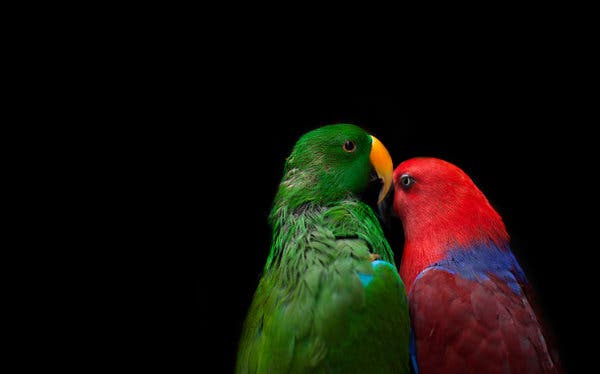Parrots are highly intelligent and social birds known for their ability to mimic human speech and exhibit various behaviors. These behaviors are often expressed through different signs that parrot owners may observe. In this article, we will explore some of the common signs that parrots display and what they might mean.

Credit: www.nytimes.com

Credit: wagwalking.com
Vocalization
Parrots are famous for their vocalization skills, and they use their voices to communicate with their owners and fellow parrots. Different vocalizations may convey various messages, such as:
- Squawking: Parrots often squawk when they are excited, scared, or seeking attention. It’s their way of making their presence known.
- Chattering: Chattering noises are typically a sign of contentment. Parrots may do this while they are playing or bonding with their human companions.
- Mimicking sounds: Parrots are known for their ability to mimic human speech or sounds they hear in their environment. If a parrot starts mimicking a particular sound, it may be trying to get attention or simply find it amusing.
Body Language
Parrots also express their emotions and intentions through body language. Here are some common signs to look out for:
| Sign | Meaning |
|---|---|
| Fluffed Feathers | A sign that the parrot is relaxed and comfortable in its environment. |
| Narrowed/Pinned Eyes | Indicates aggression or fear. Parrots may do this when they are about to bite or lunge. |
| Head Bobbing | Parrots bob their heads when they are excited, curious, or trying to get attention. |
| Wing Flapping | If your parrot starts flapping its wings vigorously, it might be a sign of joy or a need for exercise. |
| Tail Wagging | Some parrots wag their tails when they are happy or excited. It’s often accompanied by chattering or chirping. |
Feather Preening
Feather preening is a common behavior in parrots, and it serves several purposes:
- Cleaning: Preening helps in keeping feathers clean and free from dirt or parasites.
- Social Bonding: Parrots also preen each other’s feathers as a form of social bonding with their mates or companions.
- Relaxation: Preening can be a way for parrots to relax and soothe themselves.
Body Posture
Observing the posture of your parrot can provide insights into its mood:
- Upright and Alert: A parrot that stands upright with its feathers sleeked back demonstrates alertness and confidence.
- Leaning Forward: Leaning forward with feathers puffed out can indicate aggression or territorial behavior.
- Crouching: Crouching with wings slightly spread may mean your parrot is ready to take flight or trying to intimidate perceived threats.
- Standing on One Leg: Parrots often balance on one leg when they are relaxed or trying to conserve body heat.
Frequently Asked Questions Of Parrot Signs : Discover The Secret Language Of Parrots
How Do Parrots Learn To Sign?
Parrots learn to sign through consistent training and positive reinforcement. By associating signs with desired outcomes, they can understand and use sign language effectively.
Can All Parrots Learn To Sign?
Yes, most parrot species have the ability to learn sign language with proper training and patience. However, individual parrots may vary in their aptitude and learning speed.
What Are The Benefits Of Teaching Parrots To Sign?
Teaching parrots to sign promotes mental stimulation, strengthens the bond between human and bird, and allows for better communication and understanding between the two.
How Long Does It Take For A Parrot To Learn Sign Language?
The time it takes for a parrot to learn sign language varies depending on the bird’s individual intelligence, age, and the consistency of training. On average, it may take several weeks to several months.
Conclusion
Understanding the various signs and behaviors displayed by parrots is important for building a strong bond with your feathered friends. By paying attention to their vocalizations, body language, feather preening, and body posture, you can better understand their needs and emotions. Remember, each parrot has its own personality, so it’s essential to spend time getting to know and interpret the specific signs exhibited by your individual parrot.

